Tsunami: Five Years On
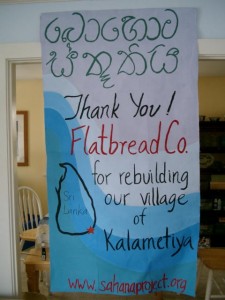 Five years ago today, I was still fast asleep when the 2004 tsunami swept over large parts of my island country, Sri Lanka. A friend called me from Washington DC, where she was working, to tell give me this cryptic message: “There was a tsunami in Thailand but don’t worry, your brother Arjuna is fine.” In a house where a TV existed but was rarely turned on, I had no idea what she was talking about. The first time I heard my oldest brother’s voice was when I listened to Lisa Mullins talking with him on The World. Somewhere in my archives I have the link to his interview and to the interview that preceded his, which is mine. It was an encapsulation of our two realities – mine, on the other side of the world, and his, having faced the tsunami. I’ll post the links when I fine them, but here is an excerpt of what he said:
Five years ago today, I was still fast asleep when the 2004 tsunami swept over large parts of my island country, Sri Lanka. A friend called me from Washington DC, where she was working, to tell give me this cryptic message: “There was a tsunami in Thailand but don’t worry, your brother Arjuna is fine.” In a house where a TV existed but was rarely turned on, I had no idea what she was talking about. The first time I heard my oldest brother’s voice was when I listened to Lisa Mullins talking with him on The World. Somewhere in my archives I have the link to his interview and to the interview that preceded his, which is mine. It was an encapsulation of our two realities – mine, on the other side of the world, and his, having faced the tsunami. I’ll post the links when I fine them, but here is an excerpt of what he said:
When the first wave came in, we were happy that we were seeing something that was really strange, but it was a very mild wave. Then the sea receded back, and we didn’t know what that meant. It was like someone had pulled the plug on the ocean, and crags and outcroppings of rock inside the sea were visible for the first time in years. We just watched it, and I was taking photographs of it. Then came this massive wall of water…The night before, I had been dancing. It was Christmas. We danced into the wee hours of the morning. With everyone, everyone bonded. There were Finns, there were Dutchmen and Dutchwomen, there were Brits, there were Japanese – I actually won a dance competition. The next morning it was like it was a whole big family of 150 people…I was on top of the continental ridge on the Rocky Mountains when 9/11 happened. I saw only one thing. What I saw, was what I heard – silence. You know what that the silence was? The silence was that all the planes had dropped out of the sky – and in America, at any given moment, if you look up into the sky, there are at least 10 planes up there. There’s a drone, that nobody really notices, until the drone stops. My nation is silent right now.
Over the next year, thanks to a phone call from the then pastor at the Universalist Unitarian Church in Waterville I directed the Sahana Project, 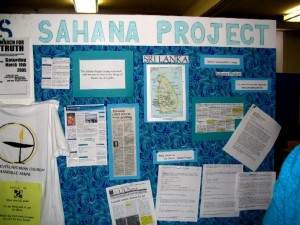 a tsunami-relief effort from the state of Maine. When I say I directed, it was mostly a matter of traveling around Maine speaking to people about my country and receiving in return, not only the donations that people sent in, but acquiring a clear understanding of how easy it was, in every situation, to find our common ground. Easy even when I was talking about Catholic convents teaching Buddhism to Buddhists to the Congregational Church in far Northern Maine, in Rangely.
a tsunami-relief effort from the state of Maine. When I say I directed, it was mostly a matter of traveling around Maine speaking to people about my country and receiving in return, not only the donations that people sent in, but acquiring a clear understanding of how easy it was, in every situation, to find our common ground. Easy even when I was talking about Catholic convents teaching Buddhism to Buddhists to the Congregational Church in far Northern Maine, in Rangely.  Easy when talking to the sixth graders who raised $2000 on their own by giving up their class trip and soliciting their donations. Easy when chatting with the high school students who gave up a dollar for the privilege of wearing a baseball hat to school. As easy when speaking to Maine fishermen who go out to sea in frigid waters unlike their Sri Lankan brethren, as it was to speak
Easy when talking to the sixth graders who raised $2000 on their own by giving up their class trip and soliciting their donations. Easy when chatting with the high school students who gave up a dollar for the privilege of wearing a baseball hat to school. As easy when speaking to Maine fishermen who go out to sea in frigid waters unlike their Sri Lankan brethren, as it was to speak  to the hundreds of people who sent in books and toiletries for the kids of the village we had decided to rebuild on the Southern coast of Sri Lanka, and the ones who sent celebratory gifts, individually tagged, with personal letters, to the thirty-five families who were moving into their new homes a few days before the first anniversary of the tsunami.
to the hundreds of people who sent in books and toiletries for the kids of the village we had decided to rebuild on the Southern coast of Sri Lanka, and the ones who sent celebratory gifts, individually tagged, with personal letters, to the thirty-five families who were moving into their new homes a few days before the first anniversary of the tsunami.
I recollect all this today because of all that was right about the Sahana Project. It had a fiscal agent, the UU Church, and it had a volunteer board comprised of individuals who had a history of commitment to community causes, 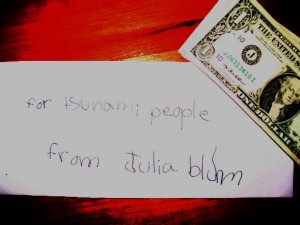 including Mark B. Tappan and Lyn Mikel Brown of Colby. It had someone “from there,” i.e. myself, who could talk not only about the need at hand but about the country and culture, and make it a real place for the donors. It had a small state where people were willing to trust in someone’s word, to believe that if I said I was going to use this money to rebuild a village, that is what would happen. It had a local organization in place, namely the Green Movement of Sri Lanka, willing to channel all of the funds collected toward rebuilding and none of it for administrative or operating costs. It had someone we trusted, my brother, to liaise between the Greens and us.
including Mark B. Tappan and Lyn Mikel Brown of Colby. It had someone “from there,” i.e. myself, who could talk not only about the need at hand but about the country and culture, and make it a real place for the donors. It had a small state where people were willing to trust in someone’s word, to believe that if I said I was going to use this money to rebuild a village, that is what would happen. It had a local organization in place, namely the Green Movement of Sri Lanka, willing to channel all of the funds collected toward rebuilding and none of it for administrative or operating costs. It had someone we trusted, my brother, to liaise between the Greens and us.
 It was one of the most fulfilling experiences of my life to watch civic organizations, community groups, private and public schools from Mt. Desert Island to Waterville to Kennebunkport, colleges like Bates and Colby, businesses like the Flatbread Company in Portland, churches and individuals who often did not have much in common with each other, come together to place their bit of the puzzle in the frame. Was ever a village rebuilt with such love?
It was one of the most fulfilling experiences of my life to watch civic organizations, community groups, private and public schools from Mt. Desert Island to Waterville to Kennebunkport, colleges like Bates and Colby, businesses like the Flatbread Company in Portland, churches and individuals who often did not have much in common with each other, come together to place their bit of the puzzle in the frame. Was ever a village rebuilt with such love?  I don’t know. What I do know is that those thirty five homes contain the music of the zils and hip-scarves of belly-dance troupes, the laughter of Maine-born kids and the compassion of adults from age 18 to 90 who may never see what they made possible.
I don’t know. What I do know is that those thirty five homes contain the music of the zils and hip-scarves of belly-dance troupes, the laughter of Maine-born kids and the compassion of adults from age 18 to 90 who may never see what they made possible.
Visiting Sri Lanka for the opening ceremony in 2005, I wrote back thus:
(We) drove down the path that is being re-constructed by another group, with assistance from USAID, to the site of the old village. The road is bordered on both sides by the sanctuary, so there were a lot of wild birds to be seen, though the peacocks weren’t in sigh perhaps because it was late in the day. The drive to the ocean was also lined on the last stretch with the devastation that is still very much in evidence. Rasika (the matriarch of the village), named the people who had lived in each of the homes, and the ones who had died. The homes were either shells, entirely gouged out – literally plucked by the roots – or just foundations. There were roofs hanging like cloth from the sides of frail structures. It was unlike anything I could have imagined – even with the photographs. The village was between the estuary and the ocean, with parts of the marshy sanctuary in between. The villagers therefore were really hammered from both sides. The ocean rushing up the estuary as well as the ocean coming straight at them. I picture it being something like a volcanic eruption of water, with the villagers trapped in the middle. Seeing all this, I cannot fathom how the young woman who was two days away from delivery her baby, managed to escape with her young, three year old son. In fact, I think that if not for the trees in the sanctuary, we would have had no villagers to help at all.
Just a few months ago, I had a note from the UU Church that there was, still, a further $10,000 left in the account that had been set up. Although the village was now rebuilt (the picture here shows the village at the time of the opening ceremonies; there are now thriving home gardens there), and many other projects completed with the aid of USAID (which built a road leading from the new village beside the bird sanctuary to the old within it, by the sea), and the Norwegian Development Fund as well as other groups, there was still some left over, and it was sent to the Greens to use for one of the community development projects at Kalametiya. It was easy enough for us to get the money to them; my brother now works for the Greens, having given up his job in the for-profit sector.
and many other projects completed with the aid of USAID (which built a road leading from the new village beside the bird sanctuary to the old within it, by the sea), and the Norwegian Development Fund as well as other groups, there was still some left over, and it was sent to the Greens to use for one of the community development projects at Kalametiya. It was easy enough for us to get the money to them; my brother now works for the Greens, having given up his job in the for-profit sector.
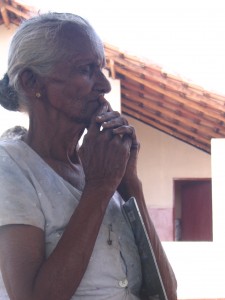 Sri Lanka has gone through many changes. In 2004, the current President, Mahinda Rajapakse was not in power, but, as the Minister from Hambantota, and passionately committed to the protection of the country’s resources, it was he that blocked the efforts of multi-national hotel corporations from securing the pristine coastal area next to the sanctuary and, instead, handed it to the Greens. A year later he was President and the country embraced a new effort to address a thirty-year engagement with terrorism. Back then, in the aftermath of the tsunami, there was a time of goodwill toward each other that helped us all disregard the effect of terrorism. Jeff Greenwald wrote an essay, A Full Moon Over Sri Lanka, for Salon.com which speaks of that time and of the ways in which Sri Lankans cope with tragedy.
Sri Lanka has gone through many changes. In 2004, the current President, Mahinda Rajapakse was not in power, but, as the Minister from Hambantota, and passionately committed to the protection of the country’s resources, it was he that blocked the efforts of multi-national hotel corporations from securing the pristine coastal area next to the sanctuary and, instead, handed it to the Greens. A year later he was President and the country embraced a new effort to address a thirty-year engagement with terrorism. Back then, in the aftermath of the tsunami, there was a time of goodwill toward each other that helped us all disregard the effect of terrorism. Jeff Greenwald wrote an essay, A Full Moon Over Sri Lanka, for Salon.com which speaks of that time and of the ways in which Sri Lankans cope with tragedy.
Today, five years on, there are still parts of the country which need to be rebuilt. There are parts of the country which also need to be de-mined and resettled and reunited. Success in all of these endeavors will not come because of speeches, declarations and focus-groups, even among the erudite and professional diaspora communities. 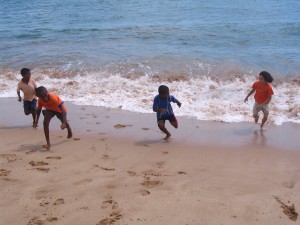 It will come because of individual human beings doing what is right, because of compassion, trust and the ability to recognize the vastness of our common ground.
It will come because of individual human beings doing what is right, because of compassion, trust and the ability to recognize the vastness of our common ground.



Ru,
Thanks for your notes about your home country. It is good to see the new homes. I hope it continues to be good. It is good to be reminded.
Best wishes for the New Year!
Maili
I can remember those days myself. I just returned from my first leg of my travel sabbatical to celebrate the holidays with my family. After hearing about the tsunami, I thought I should head to Sri Lanka (or the region) to volunteer. At the time, they didn’t want people they just asked for $, sadly I was low on funds – on leave from work.
However, I did volunteer for some time gathering medical supplies to be shipped. I hope my small effort helped some.
Thanks for writing the post and telling your story. Also, do let us know how we can help today.
stay adventurous,
Craig
Craig – There were a lot of people who sent goods that could not be used, unfortunately, due to a variety of cultural and environmental factors, so I suppose people felt that what was lacking was not goodwill – plenty of that in Sri Lanka – but rather funds. The challenge was to make those funds less anonymous and the Sahana Project – and many other smaller scale projects – managed to make that happen. We took the Sahana site down after the project was completed though I wish it could have gone on, but I have always tried to emulate the Quaker organization, the American Friends Service Committee, which sees its work as finite; when the work is done, they leave. So many organizations perpetuate themselves rather than end the conditions they are supposed to ameliorate. If you ever head to Sri Lanka, let me know and I will make sure there is someone there to take you to Kalametiya and anywhere else.